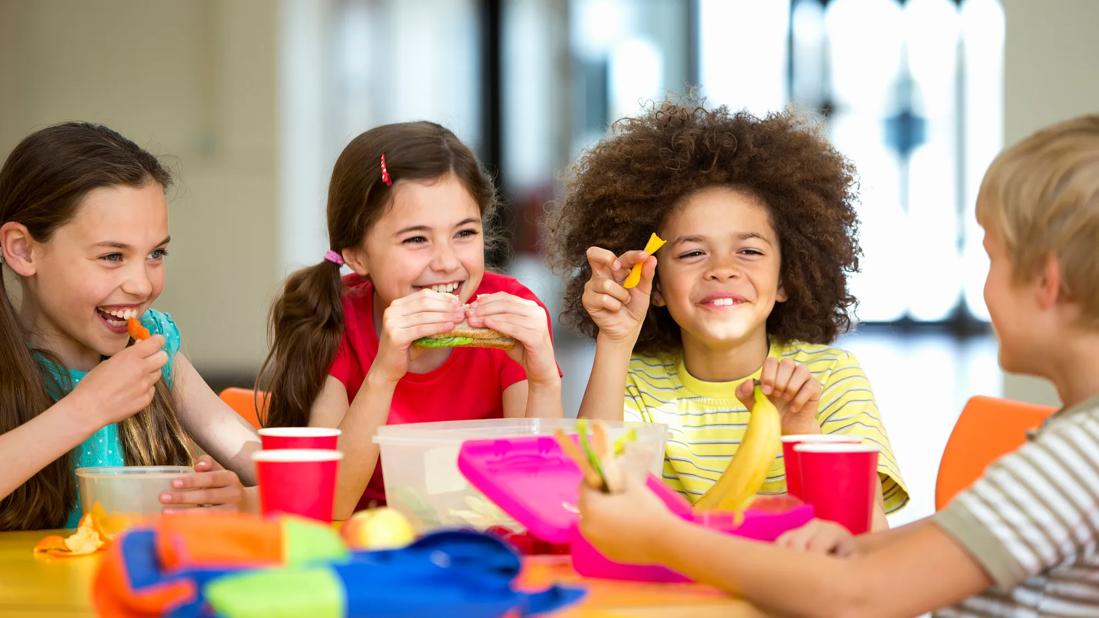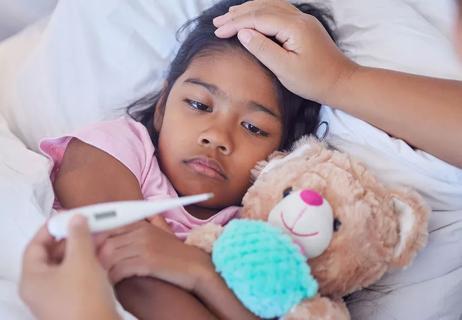A well-balanced lunch should include a protein, whole grain, fruit and vegetables, and a healthy snack

Your kid might have an easier time making the honor roll if they get an A+ in lunch.
Advertisement
Cleveland Clinic is a non-profit academic medical center. Advertising on our site helps support our mission. We do not endorse non-Cleveland Clinic products or services. Policy
Research shows that academic performance tends to increase when children eat a healthy meal in the middle of the school day. The reason? Loading up on key nutrients boosts energy and brain function, allowing young minds to soak in more knowledge.
So, what should be in lunchboxes to boost young brains and bodies? Let’s learn how to smartly pack a powerhouse lunch with the help of pediatric registered dietitian Jennifer Hyland, RD, CSP, LD.
Everyone loves playing with blocks, right? Putting together a healthy lunch can be just as entertaining once you identify the pieces to use as your nutritional building blocks.
Start by breaking a lunch down into five parts: proteins, whole grains, fruits, vegetables and something that qualifies as snacky goodness. Then, choose one food item from each category to build a well-balanced meal.
“By hitting all these categories, children get the brain fuel they need to get through the rest of the day,” says Hyland.
Better yet, you have lots of options in each category. Here are just a few ideas.
Eating a protein-packed food item at lunch can help keep your child’s mind sharp for afternoon classes. That’s because amino acids in protein help build connections between neurons in your brain.
Advertisement
Another perk? As protein takes longer to digest, it can keep your child feeling full longer and prevent a case of a grumbly tummy before the final bell.
Good sources of protein in a packed lunch include:
Nearly 2 out of 3 adolescents don’t eat whole fruit daily. Raise those numbers by including these natural treats in lunches:
Is your kid getting their veggies at lunch? Odds are the answer is no, at least judging by research. One study showed that only 16% of packed lunches at a preschool included a vegetable.
You can solve that problem by adding these to a school lunchbox (feel free to add a tasty dip or spread, too):
Yes, dairy products also pop up in the protein section ― but they’re important enough to a child’s growth and development to earn a leading role at lunch, too. “It’s helpful to have some cheese, yogurt or plain white milk in your kid’s lunch,” emphasizes Hyland.
If your child has a milk allergy, look to add in a dairy alternative.
Water (preferably in a reusable bottle) or low-fat unflavored milk are Hyland’s top picks.
If you go the juice route, make sure it’s 100% fruit juice and not a sugary fruit concoction loaded with sweeteners such as high-fructose corn syrup.
Treats don’t have to be sugar- or fat-laden calorie bombs. Want proof? Consider this list of goodies that can bring smiles at lunch.
Packing a nutritious lunch is important, but getting a kid to actually EAT that lunch is just as important, notes Hyland. Try these five tips to encourage your child to finish all the healthy food in their lunchbox.
Advertisement
The benefits of a nutritious lunch extend far beyond getting your child through the school day and lessons in reading, writing and arithmetic. Eating a healthier lunch also can help them maintain a healthy weight.
That’s significant given the growing concern over obesity, the most common chronic disease affecting youths. More than 160 million children around the world are living with obesity.
“Packing a school lunch can be a great teaching moment for kids,” says Hyland. “It’s a great way to talk to your children about the importance of nutrition and what it means to their long-term health.”
And if they ace their afternoon tests in the process, consider it a nice bonus.
Advertisement
Learn more about our editorial process.
Advertisement

Preschool age is typically between 3 and 5 — but readiness may matter more

Asking questions, creating routines and setting schedules can help get students back on track

All states require DTaP, MMR, polio and chickenpox vaccines — healthcare providers recommend others, too

School can be stressful, even anxiety-provoking — get to the root of the concern and enlist help when needed

‘Active shooter’ exercises may raise both awareness and anxiety

Focus on a positive mindset, strong study habits and healthy living

Vomiting and fevers are a hard no — other symptoms are a judgment call

Get to know the resources they have on and off campus, including their friends

The ‘sunshine vitamin’ is found naturally in some fish and is added to other foods

Autism and ADHD often go hand in hand, giving rise to the term AuDHD

The Yuzpe regimen is less effective than other forms of emergency contraceptives, and it’s associated with more side effects